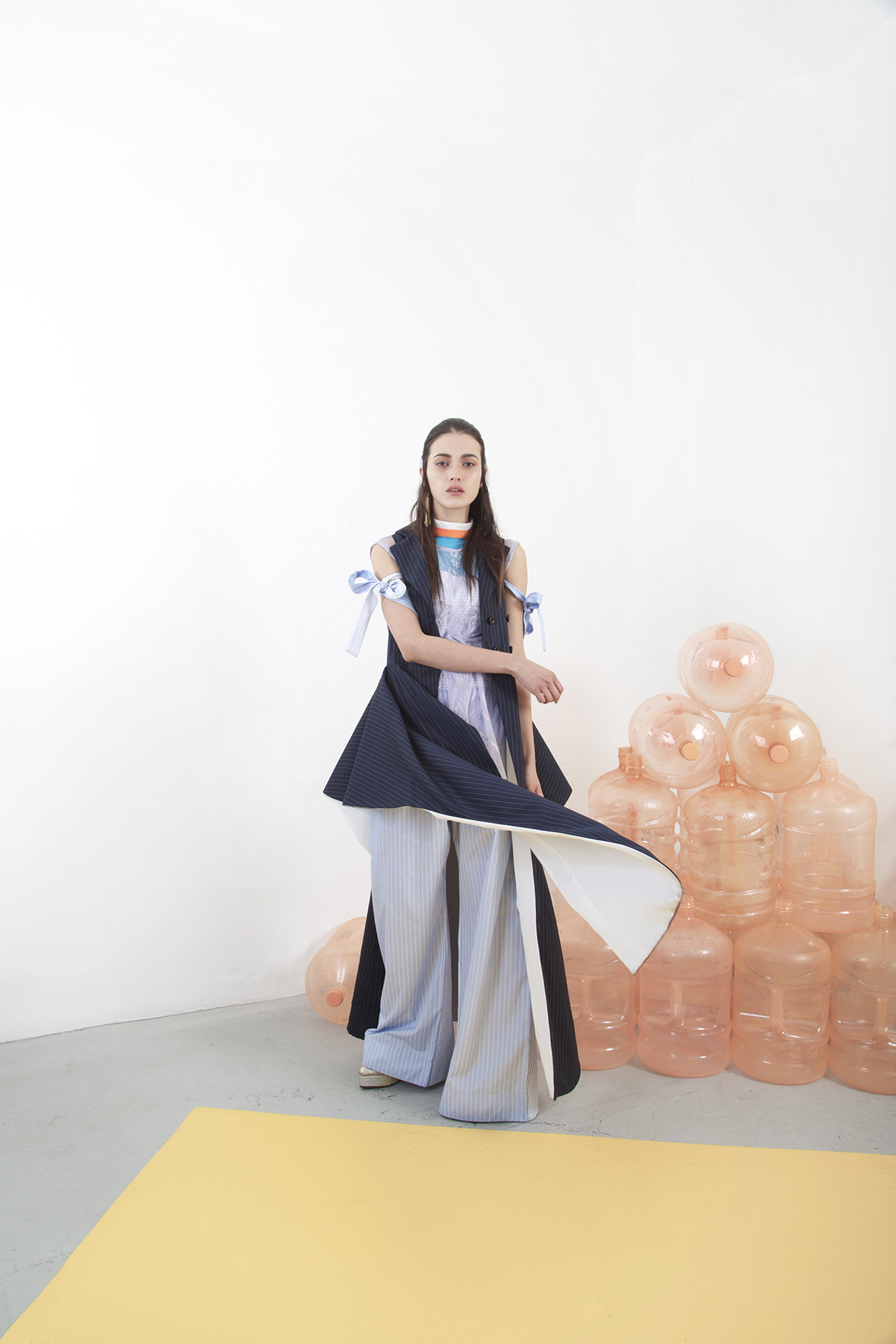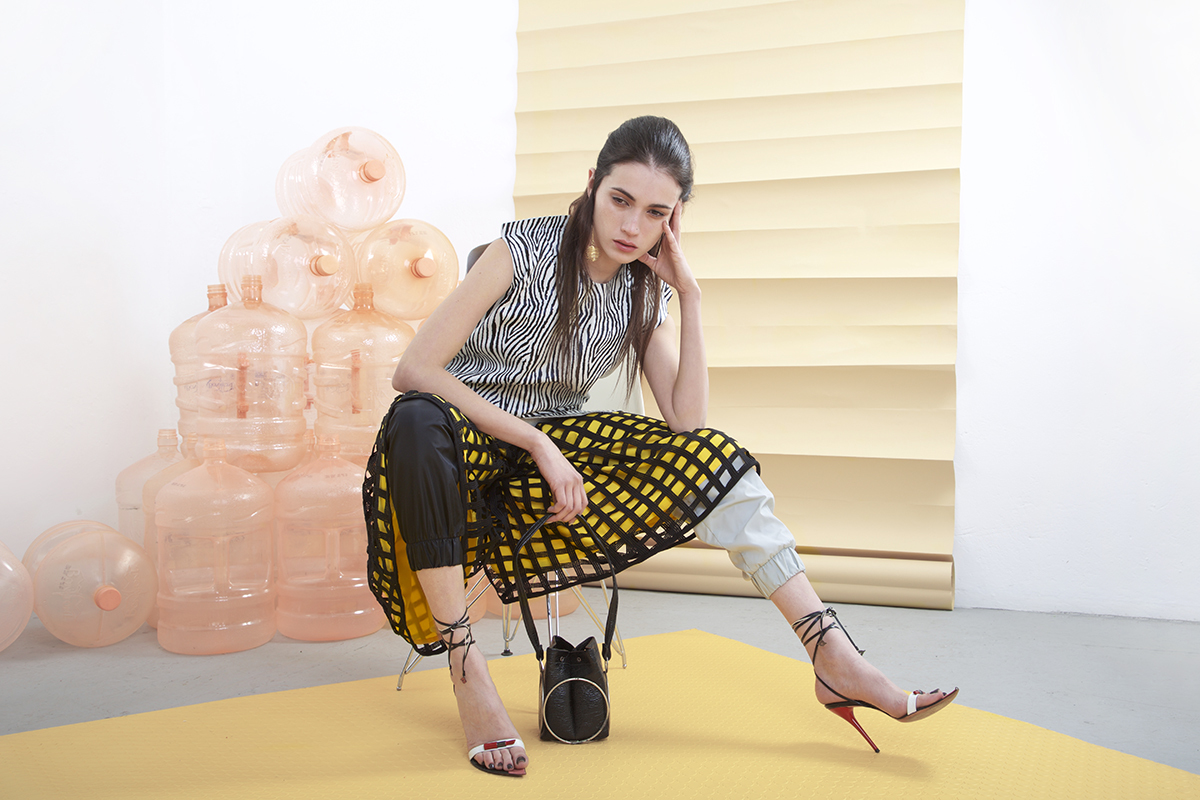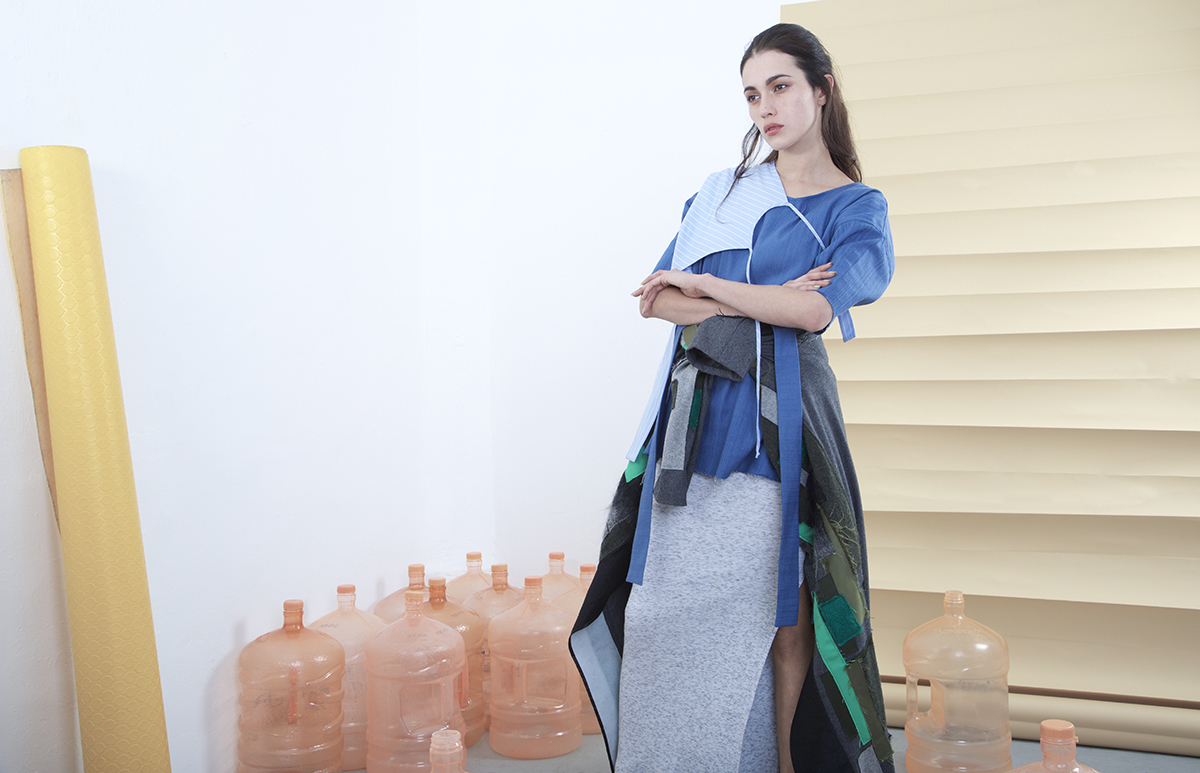In 1991, Businessweek declared that the American Dream was “alive and well in Mexico” and that the Mexicans’ avid consumption of everything that came from the United States is what was sustaining it. This came from a belief that most Mexicans held: everything produced outside of Mexico is amazing and everything produced inside of it isn’t. This rejection had a direct impact on the country’s creative industries, because not only was a foreign influence all pervasive, but everything being produced inside the country was almost unanimously ignored. So abroad, Mexico was clumsily associated with the same stereotypical images for decades; huarache sandals, tacos, Frida Kahlo, drug wars, and in spite of the country’s rich heritage, this reductive image never represented the diversity of the Mexican youth and what they could achieve.
But now Mexican fashion is entering a more ambitious phase, combining the energy of a young generation with the experience of an older one, who kept the Mexican fashion scene alive during the hard times. This new wave of designers don’t believe in only looking to America for references, but are inspired by their own country’s history and are creating a new aesthetic that is both Mexican and modern at the same time, and drawing global attention because of its difference.
Fruitmilk, run by Pauline Shaw and Kellynn Smith, is a shop in LA dedicated to exhibiting artists and fashion designers. Last year they visited Mexico City with the intention of exploring the fashion scene there and instilling parts of it into their work. “Everyone in Mexico is not working from a similar style, but from a similar feeling. What impressed us most was the collaborative nature of the work that they’re doing over there. They have a very tight knit community. The art world and the fashion world are not separated; it’s almost the same movement,” Kellynn explains. The community she talks about – although very small – involves young people, designers, gallery owners and emerging artists. “At the moment I feel like all eyes are on Mexico and that there’s an atmosphere being created where they’re being encouraged to experiment and find their own ways of accomplishing things, Pauline tells us. “It doesn’t feel like a rigidly established system. I feel that they’re allowed to think outside the box and create something that you’re not used to seeing from Mexico.”

Roberto Sánchez, a designer that has stood out as part of a movement utilizing the internet as a way of disseminating their designs across the world, goes on; “There’s a lot of thirst abroad to know about what is being done here.” Tumblr and Instagram are these designers’ most powerful tools and it is because of these that the Mexican creative community has become truly global. Roberto doesn’t present his collections on the runway or in retail stores, yet his pieces have become the benchmark for forward thinking Mexican fashion. “Truth is, I don’t design for my immediate surroundings,” clarified Roberto, “I like creating collections for people abroad, for the whole world.”
In spite of it’s rocky start, the Mexican fashion industry is fighting for more stable growth and business. According to Rosario Mendoza, from Canaive [The National Chamber of Apparel Industry] – an institution that represents and defends the interests of Mexico’s clothing entrepreneurs – the industry has stagnated, however there are still those standout brands manage to buck the trend simply because of their unbridled creative vision. Mexico can’t compete against China’s ultra low production costs so it must find its value in design.
“I wouldn’t move my brand to another country,” said Andrés Jiménez, designer of the Mexican fashion brand Mancandy. “I like that it is done in Mexico, as a Mexican I think that it’s important. I like having unique pieces, making them in my workshop and giving them that value. It’s not easy making them in Mexico, but I like it more this way. As a designer I like having control of the process, and you cannot have that through a Chinese maquiladora“. Alongside Alejadra Quesada, Andrés Jiménez is one of the designers who have been present in the industry for years, feeding the Mexican fashion world with a unique style.
“The reason why I make my brand in Mexico is because I’m Mexican, and I use Mexican resources because the quality is superb. When you own a fashion brand, you cannot lose this romantic approach, but you do have to keep an eye”, said designer Lorena Saravia, who has just opened a 1400 square foot flagship store in Masaryk, Latin America’s most expensive shopping avenue.
There’s no CFDA or BFC in Mexico, and trying to apply for government subsidies can become a bureaucratic labyrinth. “Government subsidies are designed so that people can develop their businesses, but they’re not necessarily meant for fashion,” says Emilio Sánchez, who works at Expand Consulting MX and has been promoting foreign commerce and business development in Mexico for the last 22 years. “You have to be able to adapt and know where to look for things. The strategy for attracting business in Mexico is still to sell your clothes abroad, because then Mexican’s will associate your brand with quality.” But according to Canaive data, which states that the country’s fashion industry represents 10% of Mexican GDP, it has potential for huge sales and is therefore worth breaking into the market.

Víctor Barragán is 23 years old and his success with his brand, YtinifninfinitY, has allowed him to drop out of school, where he was studying industrial design. “I started this as a game in 2010 and only later, due to all the demand I was getting on Tumblr, I decided to dedicate myself fully to my brand. Mexico represents only the two per cent of my sales,” he explains. YtinifninfinitY does not sell their products in Mexican stores, all of his income comes from online orders in the US, Australia, Europe and Asia.
Mexican fashion has a concept of its own, it is conscious of the global tendencies, and it is an industry that wishes to strengthen itself in the next few years. Even if the Mexican government does not offer the necessary subsidies to expand it’s clothing industry, the publics growing demand for Mexican fashion will ensure it’s a problem that cannot be ignored. The Mexican Dream is alive and well in Mexico.
Credits
Text Cheryl Santos
Photography Ignacio Torres
Styling Roberto Sánchez
Set Designer Richard Pedaline
Make-up Juan Carlos Michelena
Hair Gerardo Arzate
Styling assistance Paul Lara
Model Elizabeth Valdez at Paragon
